Review
Our time with the Volkswagen ID Buzz Cargo has sadly come to an end, but in the six months it spent with us, getting behind the wheel of it never failed to put a smile on my face.
It’s an unusual thing to say about what is essentially a work tool, but such are the capabilities and qualities of the ID Buzz that it stands apart from the crowd.
That wasn’t an intentional segue, but one of the major reasons for this is undoubtedly its looks – its retro styling and the Lime Yellow of our test model saw it earn plenty of attention from members of the public.
Purely from a driver’s perspective, the cabin is stylish, comfortable and hard-wearing, while the ID Buzz’s road manners benefit hugely from being on the same Volkswagen Group platform as models such as the Volkswagen ID3 and Audi Q4 e-tron.
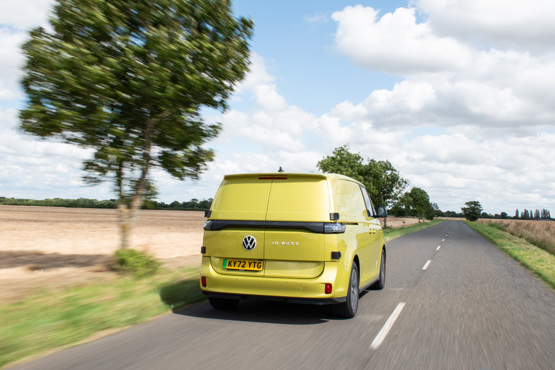
I’ve covered several thousand miles in our test model, with numerous trips over 100 miles, and really appreciated its comfort and refinement.
As its running gear is also shared with a number of passenger cars, it offers a punchy 204PS and benefits from an impressive WLTP range of 254 miles – more than its light commercial vehicle rivals - and class-leading charging capabilities.
It has an onboard 11kW AC charger, so takes seven-and-a-half hours to go from empty to full, while it can charge at up to 170kW from a DC rapid charger. This means it can take as little as 30 minutes to charge from 5% to 80% capacity.
As detailed in our previous update (below), average efficiency has been 2.9 miles/kWh, which matches the official figure given by Volkswagen.
Factors which should be taken into account are that our six-month test straddled the colder, winter months which hits efficiency, but almost all of the miles driven were done without a load, so it benefited from running empty.

I’m not the only Fleet News staffer to be impressed with the ID Buzz. Colleagues who have driven it also shared my enthusiasm for it, while more official validation has come from the Fleet News Awards judges, who named it the Best Small Van.
They praised it for its class-leading range and charging speeds, and for being the “small van that every driver wants”.
They added: “Excellent loadspace, strong residual values and competitive running costs combine with drive appeal and an iconic design for a compelling package. The Buzz Cargo packs a punch with fleets – it’s the van they want when they go electric.”
It has already found a home on the fleets of many major organisations, such as Mitie, Miele and Wates Group, and it wouldn’t be a surprise to see it becoming an increasingly common sight on UK roads.
Summer vs winter
Hopefully the colder weather is now behind us and after suffering the expected dip in efficiency, we’re hopeful our ID Buzz Cargo will return to pre-winter levels.
On the coldest of trips, the average efficiency fell to 2.4 miles/kWh (about a 25% to 30% drop on the figures we were getting in the warmer weather), which gives a total range of around 185 miles.
The optional heat pump (£1,050) may help to improve the cold weather range but it's not fitted to our van. We do have a heated driver's seat and a heated windscreen, however.
In the warmer months, we were seeing up to 3.9mi/kWh and could have theoretically exceeded the Buzz's 257-mile claimed range by almost 50 miles.
Over the 3,690 miles it has covered so far since we got the keys in August, it has managed to average 2.9mi/kWh and comfortably gives a range of 200 miles between charges.
During winter, the ability to preheat the cabin via the Volkswagen app is very much appreciated and somewhat negates the lack of heat pump if you warm up the van while it's still plugged in.
To access this functionality, you need to install the We Connect ID app, set up an account with Volkswagen and then you’re good to go. Once this is completed, the app is easy to use.
Equally, the app allows you to cool down the cabin in the summer. Air conditioning is fitted as standard to all ID Buzz models, improving driver comfort.
The app itself does not have all of the bells and whistles of some of those offered by other manufacturers, but it does have plenty of functionality and gives you the information you need.
Key information is the remaining battery capacity and range, whether it is being charged and, if it is, how long it will be until it is at 100%.
You can also access a vehicle health report which monitors the van for issues such as assist systems, brakes, powertrain, lighting and tyres, with the ability select an authorised workshop to which the ID Buzz will regularly transmit service-related data to.
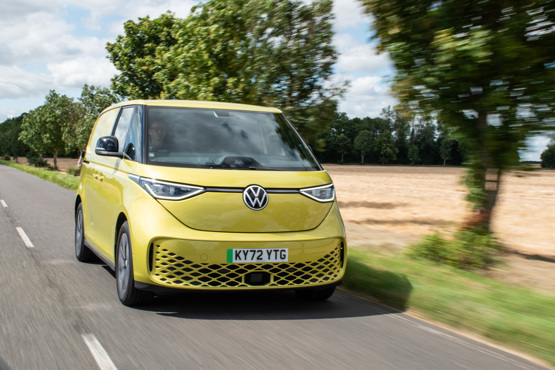
Unfortunately, the issue between my home charger and the ID Buzz as detailed in last month’s report has continued.
Now it never charges above 3.6kW, while several other EVs I’ve plugged into my Pod Point wallbox since the issue started all take power on at 7kW. The ID Buzz also continues to charge normally at our office AC chargers.
I’ve no idea what the issue is, but it has meant that I have had to charge the van outside the overnight discount period my EV tariff offers, raising the running cost of the vehicle.Other than that, life with the ID Buzz continues to be a real pleasure.
Range and charging
Life with our Volkswagen ID Buzz Cargo has been great so far, but charging issues over the past month or so have soured things a tiny bit.
I have a pretty tried and trusted routine when it comes to charging. I plug in at the 22kW AC chargers at work once a week and if I need to top-up before I return there, I use the 7kW wallbox I have at home.
If I go on a long journey where the range of the full battery is not enough, the I use a rapid DC chargepoint on the public network.
It has always proved to be a reliable and cost-effective routine. I’m on an EV electricity tariff at home where I get heavily discounted power for five hours a night and to make the most of this, I set the timer on my smart Pod Point charge point to operate only during these hours.
This gives me around 36-38kWh – usually equivalent to 100-120 miles depending on vehicle and efficiency – of energy for £5, which is less than five pence per mile as well, as being a healthy amount of added range each day.
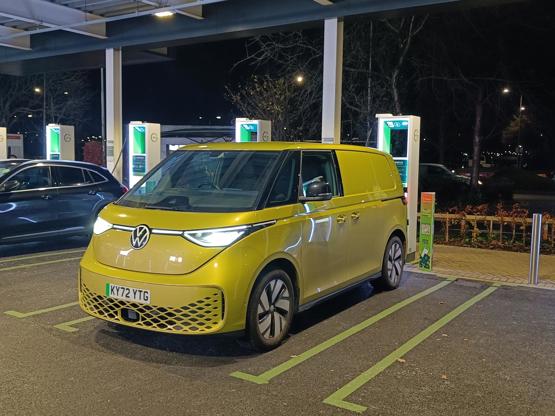
However, since the beginning of November, things have not been running so smoothly. The workplace chargers still provide power at the 11kW capacity of the ID Buzz’s onboard charger, but more often than not the amount of charge going into the ID Buzz from my home wallbox has dropped significantly.
Instead of the usual speed of 7kW, the Volkswagen app shows the Buzz has often been taking on charge at a rounded-up 4kW, meaning I get around a 60-mile top-up instead of 120 miles.
Data from the Pod Point app backs this up: the amount of charge delivered has almost halved to 19kWh or 20kWh on many occasions. But at other times, it charges at 7kW an hour, giving me the amount of range I expect.
I don’t know whether this is down to the software in the ID Buzz, an issue with my charge point, or another factor such as the weather or electricity supply to the grid, but it does bring an element of unreliability into operating the EV as I don’t know what I’m going to wake up to in the morning.
Earlier this month I switched vehicles with a colleague and when I plugged his EV in, it charged at 7kW so I’m none the wiser about what the issue is.
The drop-off in overnight charge has also coincided with me having to undertake some long journeys, so I have had to use the public charging network more.
This has also been a mixed experience. I’ve used the Gridserve Electric Forecourt at Gatwick and Osprey network in St Neots with no issue at all, but the same could not be said about the Applegreen Electric chargers at Birchanger Services near Stansted Airport.
When I got there, there were a handful of EVs plugged in and successfully charging, but along with two other cars (an MG4 and a Polestar 2), I engaged in a game of musical chairs, moving from one charger to another until one finally connected to our vehicles.
We all had similar issues – the charge points would either not recognise our payment card or, it if did, would not connect to the charger.
On the fifth attempt (and four pre-payments being taken from my bank account later) I successfully connected to a charger, which was one of the ones which the MG could not connect to, while the Polestar found success with one of the points which failed with the ID Buzz. The MG4 drove off to try its luck at the nearby Gridserve chargers.
I don’t think this experience was a problem with our long-termer as vehicles from other manufacturers were also struggling, but these issues did hammer home the importance of a reliable charging network.
I would say they caused me a minor inconvenience, but for a fleet which has to rely on its vehicles to cover a certain amount of miles each day, they could cause major operational disruption.
Fit for fleet
It would be easy to look at the ID Buzz Cargo’s sought-after Volkswagen badge, its concept van looks and electric powertrain and dismiss it by assuming it is too expensive and niche to consider for a fleet.
But the fact a number of major organisations, such as Wates Group and Mitie, have taken on the fully-electric LCV should show that, when all factors - including cost - are included, the ID Buzz Cargo should be considered as a serious workhorse.
Mitie also operates more than 600 Vauxhall Vivaro-e fully-electric vans – a range which is a leading example of a ‘typical’ fleet van - with a split of standard L1 and long L2 wheelbase versions.
But how does this fleet stalwart stack up against the Volkswagen van? For the purposes of our comparison, we will use the L1 Elite, which is closest to our ID Buzz Cargo Premium test model in terms of size and specification.
The Volkswagen is 4,712mm long and 2,211mm wide (including mirrors) compared to the Vauxhall’s 4,959mm and 2,204mm.
This means that if practicality is the ultimate consideration, then the larger Vivaro-e is the sensible choice.
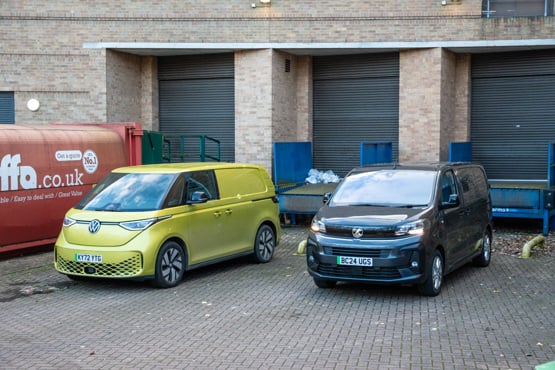
At 5.3cu m, its loadspace volume is 26% larger than the ID Buzz Cargo’s 3.9cu m, while its 1,000kg payload is 41% greater than the Volkswagen’s 592kg.
The maximum dimensions of the Vivaro-e’s loadspace is 2,512mm long, (3,674mm using the load-through facility which is standard on Elite trim) 1,397mm high and 1,636mm wide, while the width between wheelarches is 1,258mm.
In comparison, the ID Buzz offers 2,208mm, 1,279mm, 1,732mm and 1,230mm respectively.
So, from a practicality point of view, it’s advantage Vivaro-e.
However, the ID Buzz Cargo offers a stronger cost proposition.
Not taking any manufacturer discounts into account, the Volkswagen has a retail price of £44,655 exc VAT, £3,547 less than the Vauxhall. Both are eligible for the Government’s £5,000 plug-in van grant.
The Van Running Cost tool on fleetnews.co.uk also shows the ID Buzz Cargo will cost much less to run: over a four-year/80,000-mile cycle, the Buzz will cost 38.17 pence per mile, with the Vivaro-e 51.92ppm.
Depreciation is the biggest contributor to this. At the end of the term, the ID Buzz Cargo will be worth £16,125; the Vivaro-e £7,300.
The ID Buzz Cargo will also cost less to ‘fuel’ as it is significantly more efficient. From its 77kW battery, the Volkswagen has an official WLTP range of 254 miles. From its slightly smaller 75kW battery, the Vauxhall manages only 196 miles.
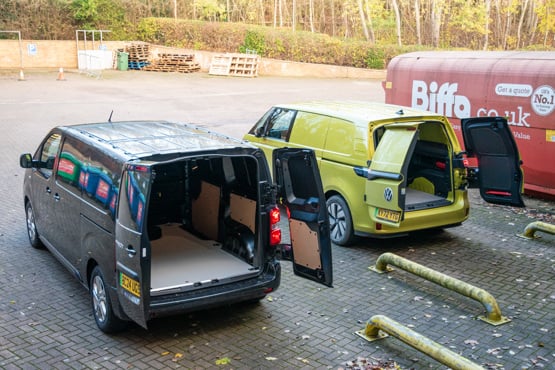
The ID Buzz Cargo also takes much less time to charge. It has an onboard 11kW AC charger which means the battery can charge from empty to full in seven-and-a-half hours. The Vivaro-e has a 7kW charger (an 11kW unit is available as an option) and takes 11 hours and 20 minutes.
It is a similar story for DC charging. The Volkswagen can charge at up to 170kW, meaning it can take as little as 30 minutes to go from 5% to 80% capacity. The Vauxhall has the capability to take DC current at 100kW, taking 45 minutes to charge from 0% to 80%.
So what does all this analysis mean? Obviously organisations select vans primarily if they are fit-for-purpose, and the ID Buzz Cargo’s limitations from a practicality point of view may mean it is not suitable for some businesses.
But if the Volkswagen’s capabilities match up to a fleet’s operational requirements, then its costs and on-road capabilities make it worthy of serious consideration.
Loadspace and practicality
We’re into the second month of our time with the Volkswagen ID Buzz Cargo and, having used it for a variety of jobs, I now have a much greater understanding of its practicality.
We detailed the size of the loadspace and payload in our first report, but the van has since been used for a variety of jobs such as moving furniture, collecting paving slabs and transporting various other items, such as bicycles and bags of compost.
Loads can be securing using six lashing rings on the floor, as well as rails on the side walls. Our model is fitted with the standard rear wing doors, which can be opened to 180 degrees, while a wide-opening tailgate with a window is available as an option. Having sliding doors on both sides is a great boon.
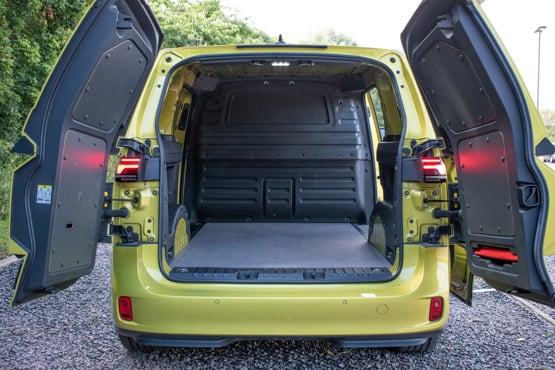
Our test model is also fitted with the standard fixed bulkhead, which handily has two coat hooks mounted on it. The bulkhead is also available with an optional window and/or an opening through which items can be loaded.
This practicality, despite its concept car looks, means it is being taken seriously by some of the UK’s largest fleets: Mitie, for example, ordered 650 of them in February, fitted out with bespoke racking and other storage solutions, while Miele has also taken on a number of the models.
While the practicality of any van is key to fleet operations, any driver, of course, will spend a lot of time in the cabin and it’s hard to imagine that they would be anything other than very happy to be in the ID Buzz.
Build quality is high and while the materials are designed to be hardwearing – our van has covered just over 8,500 miles and the interior is as new – the integration of the same infotainment system, driver display panel and controls as the Volkswagen ID4, lifts it above general expectations.
This means the ID.Buzz’s gears are operated by the right steering wheel stalk (the left one controls the wipers and indicators/main beam) which frees up legroom for the centre-seat passenger.
Despite this, it is still a squeeze to fit three normal-sized adults in the cabin, making the middle seat more suitable for children or for shorter journeys only.
There is also plenty of storage: there are two cabin-width bins on the top of the dashboard between the steering wheel and windscreen, a number of other cubby holes as well as a handy compartment to the left of the steering wheel for a mobile phone which also has two USB-C ports.
The cabin also has two other USB-C charging ports and a 12-volt socket. Our vehicle is also fitted with the optional (£408) 230-volt three-pin socket located on the frame underneath the passenger seat.
I had hoped this would draw power from the main traction battery so I would be able to power appliances such a pressure washer from it, but disappointingly (for me) it doesn’t. Instead, it takes it from the 12V battery and has a 300W output, making it suitable for much lighter duties, such as charging laptops.
We’ll look at the running cost data and real-world efficiency more in the next report, but from a practicality and driver well-being perspective, the ID Buzz continues to look like a winner.
VW ID Buzz Cargo joins our fleet
One of the first things I noticed after getting behind the wheel of our new long-term Volkswagen ID Buzz Cargo van was the enormous amount of attention it attracts.
I’ve had people point at it, wander over to it to have a closer look as soon as I’ve parked it, while pedestrians and other motorists often stare at it when I drive past them.
I’m sure part of that is because of the Commerce Plus (basic price of £43,875, exc VAT) trim level model’s vibrant Lime Yellow metallic colour, but also because of the retro-futuristic styling which harks back to the iconic 1950s Volkswagen T1 van.
However, the ID Buzz Cargo’s appeal is much more than just skin deep. Underneath the striking exterior is a capable van.
At 4.7m long, it sits between the Caddy (4.5m) and shortest Transporter (4.9m), and offers a load space of 3.9cu m (Caddy: 3.7cu m; Transporter short wheelbase/normal roof: 4.3cu m), with Volkswagen saying it can carry two Euro pallets. Payload is 592kg.
The ID Buzz Cargo’s maximum load length is 2.2m, with a maximum loading width of 1.7m. The distance between the wheel arches – which is also the same as the rear door opening - is 1.23m. It has sliding doors on both sides, as well as having rear doors which can open 180 degrees.
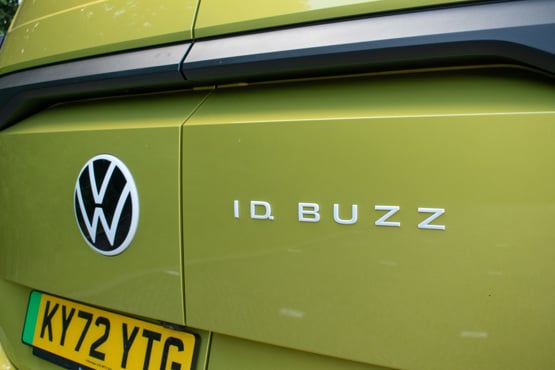
The van is based on the Volkswagen Group’s MEB platform, which is also used for a number of passenger cars such as the Volkswagen ID4, Audi Q4 e-tron and Cupra Born.
ID Buzz Cargo also uses the same 204PS motor, rear-wheel drive layout, as some of those, while its 77kWh battery provides a WLTP range of 254 miles.
The onboard charger technology is also shared with the cars, and this means the van can charge at speeds of up to 170kW from a DC charger, taking 30 minutes for the battery to go from 5% to 80% capacity.
A maximum rate of 11kW from an AC charger will see it take seven-and-a-half hours to go from empty to full.
Over the next few months we’ll be reporting on life with the ID Buzz Cargo, but there has been plenty to like about it so far.
Its car origins are clear in the way it drives, while much of its standard safety and comfort equipment is shared across the VW Group vehicles.
In particular, the navigation and infotainment system will be recognised by anyone familiar with the ID3 and ID4, and features a 5.5-inch driver display panel and a 10-inch centrally-mounted touchscreen.
As mentioned earlier, the positive impression it has made so far with the wider public has been clear – and that level of enthusiasm has been more than matched by me.
Specs
| Manufacturer | Volkswagen |
| Model | ID. Buzz Cargo |
| Specification | Volkswagen ID. Buzz Cargo 210kW Commerce Plus 79kWh Auto |
| Model Year | 2026.00 |
| Annual VED (Road tax) | £1035 |
| BIK List Price | £42,730 |
| Range | 276.00mile(s) |
| CO2 | N/A |
| Insurance Group | N/A |
| CC | 1 |
| Fuel Type | |
| Vehicle Type | Medium van |
| Luggage capacity (Seats up) | N/A |
Running Costs
| P11D | £42,730 |
| Cost per mile | 40.21ppm |
| Residual value | £18,575 |
| Insurance group | N/A |
| Fuel Type | |
| Cost per mile | 40.21ppm |
| Fuel | 4.49ppm |
| Depreciation | 32.02ppm |
| Service maintenance and repair | 3.70ppm |
Rivals
Info at a glance
-
P11D Price
£42,730
-
MPG
N/A -
CO2 Emissions
N/A -
Payload
N/A -
Load Volume
N/A -
Load Width
N/A -
Load Length
4,712mm -
Range
276.00mile(s)

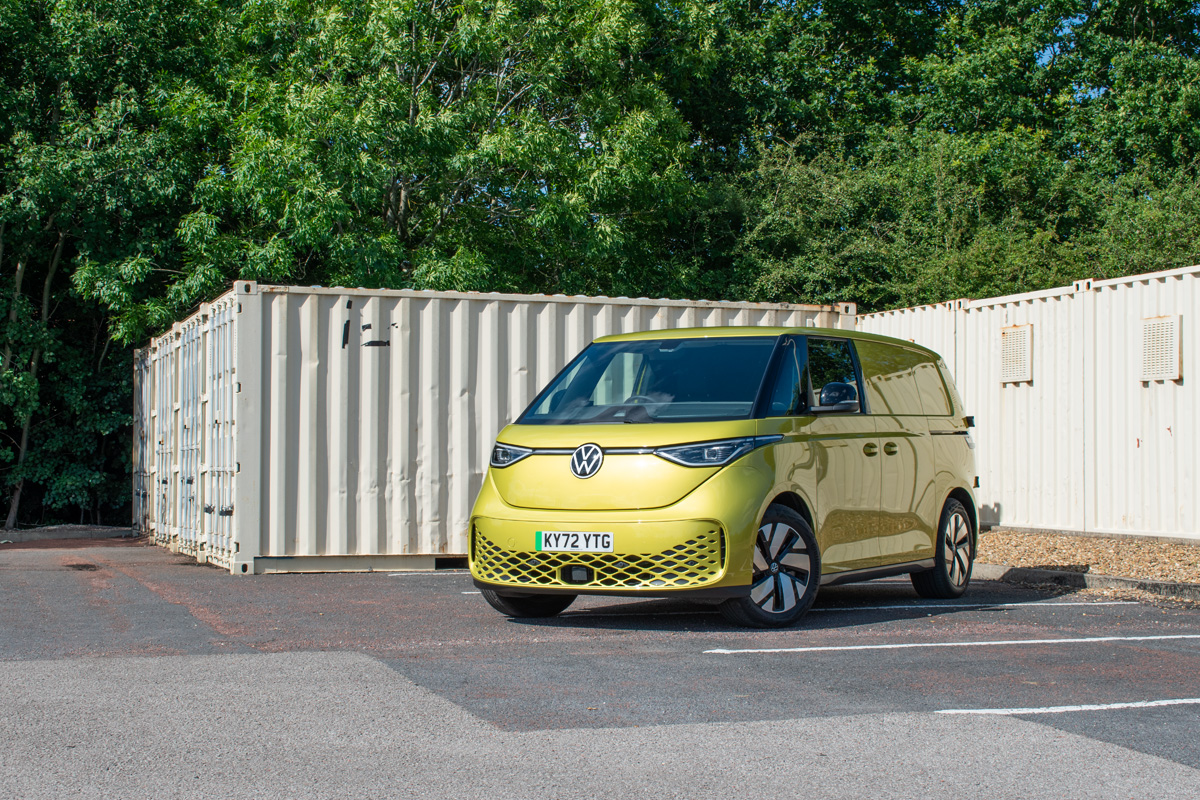
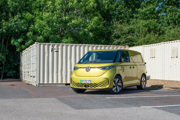
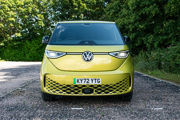
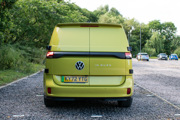
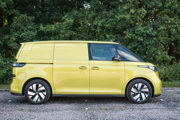
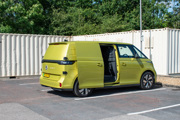
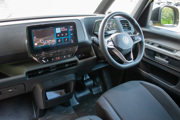
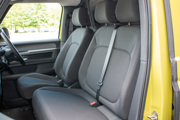
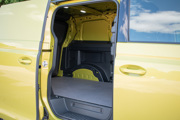
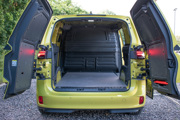
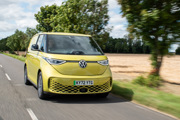
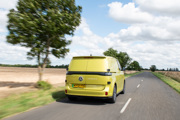



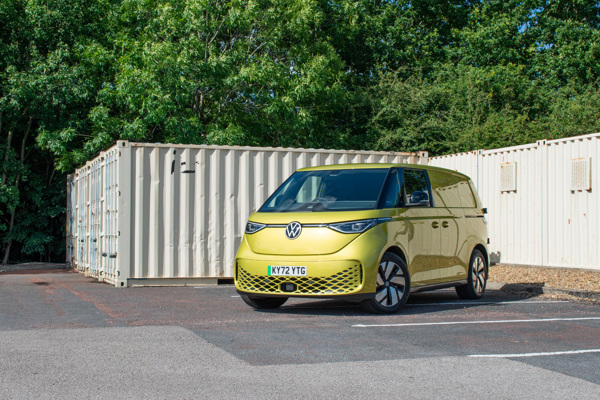
 Diesel
Diesel
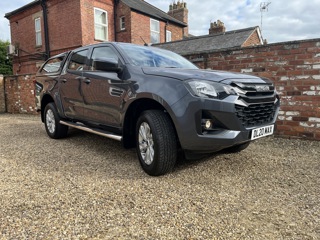
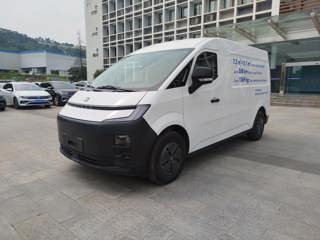

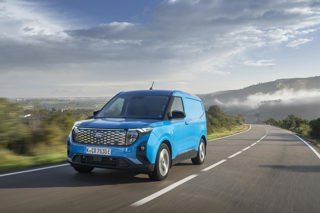
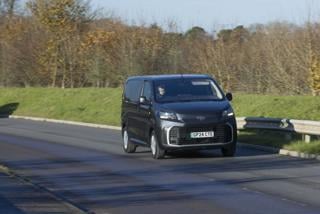





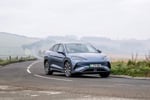


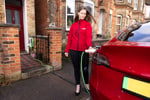



Login to comment
Comments
No comments have been made yet.